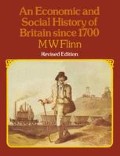Abstract
Though it will be necessary in this chapter to speak of the ‘working class’ as though this were a clearly defined social group, in reality those social classes below the upper and middle classes in the early nineteenth century were ex-ceedingly diverse. The early nineteenth-century working class, in other words, was a composite group, including such diverse types as the skilled artisan, the unskilled labourer, the Irish immigrant, the village craftsman, the worker in rural domestic industry, the small farmer, the landless agricultural labourer, the women and child workers, a numerous group of both male and female domestic servants, and — an important element in early nineteenth-century society — the ‘impotent poor’ — those whom age, poor health, or inability to find employment threw on the Poor Law.
Preview
Unable to display preview. Download preview PDF.
Author information
Authors and Affiliations
Copyright information
© 1975 M. W. Flinn
About this chapter
Cite this chapter
Flinn, M.W. (1975). Working-class movements. In: An Economic and Social History of Britain Since 1700. Palgrave, London. https://doi.org/10.1007/978-1-349-00023-4_13
Download citation
DOI: https://doi.org/10.1007/978-1-349-00023-4_13
Publisher Name: Palgrave, London
Print ISBN: 978-1-349-00025-8
Online ISBN: 978-1-349-00023-4
eBook Packages: Palgrave History CollectionHistory (R0)

